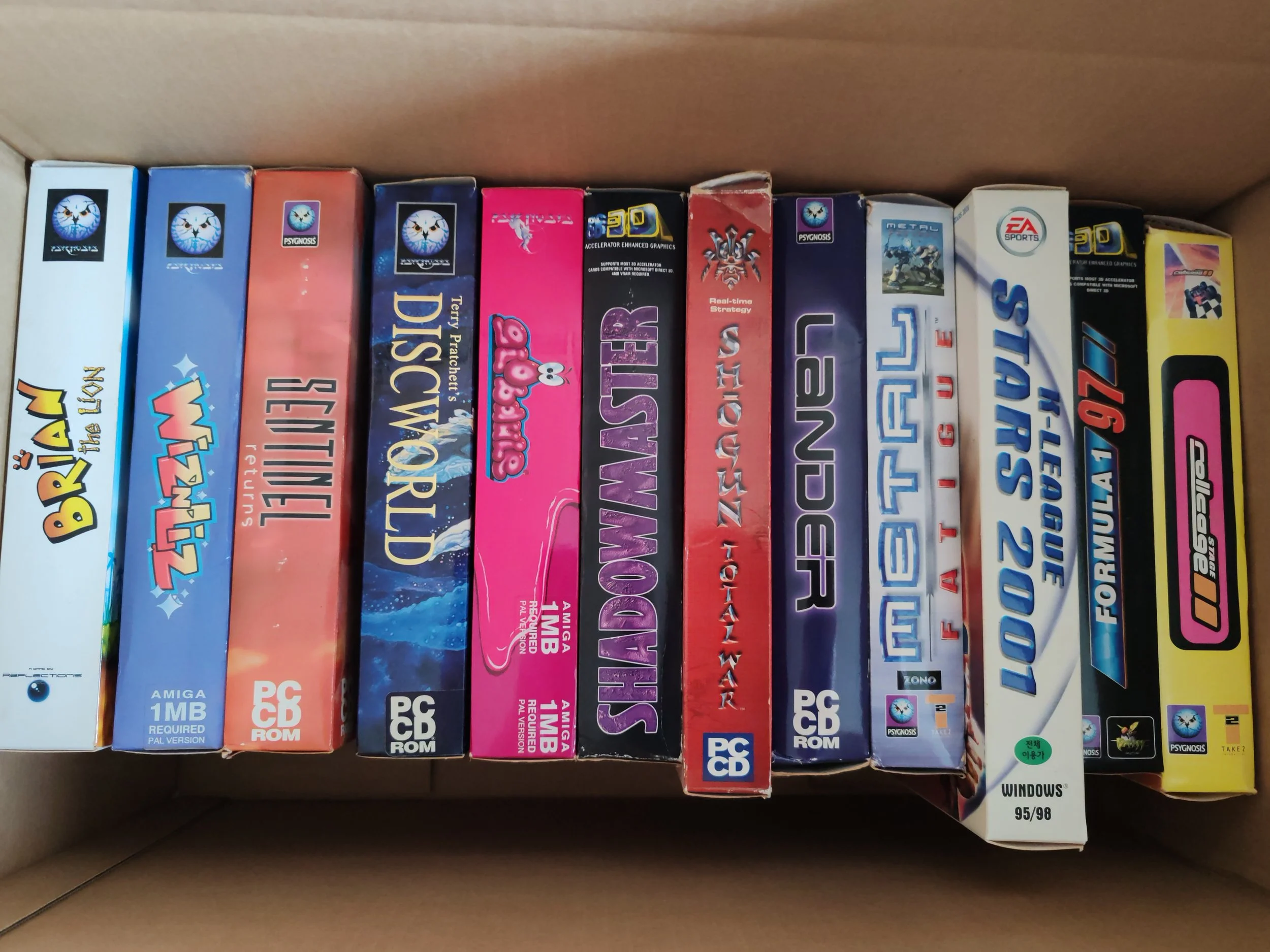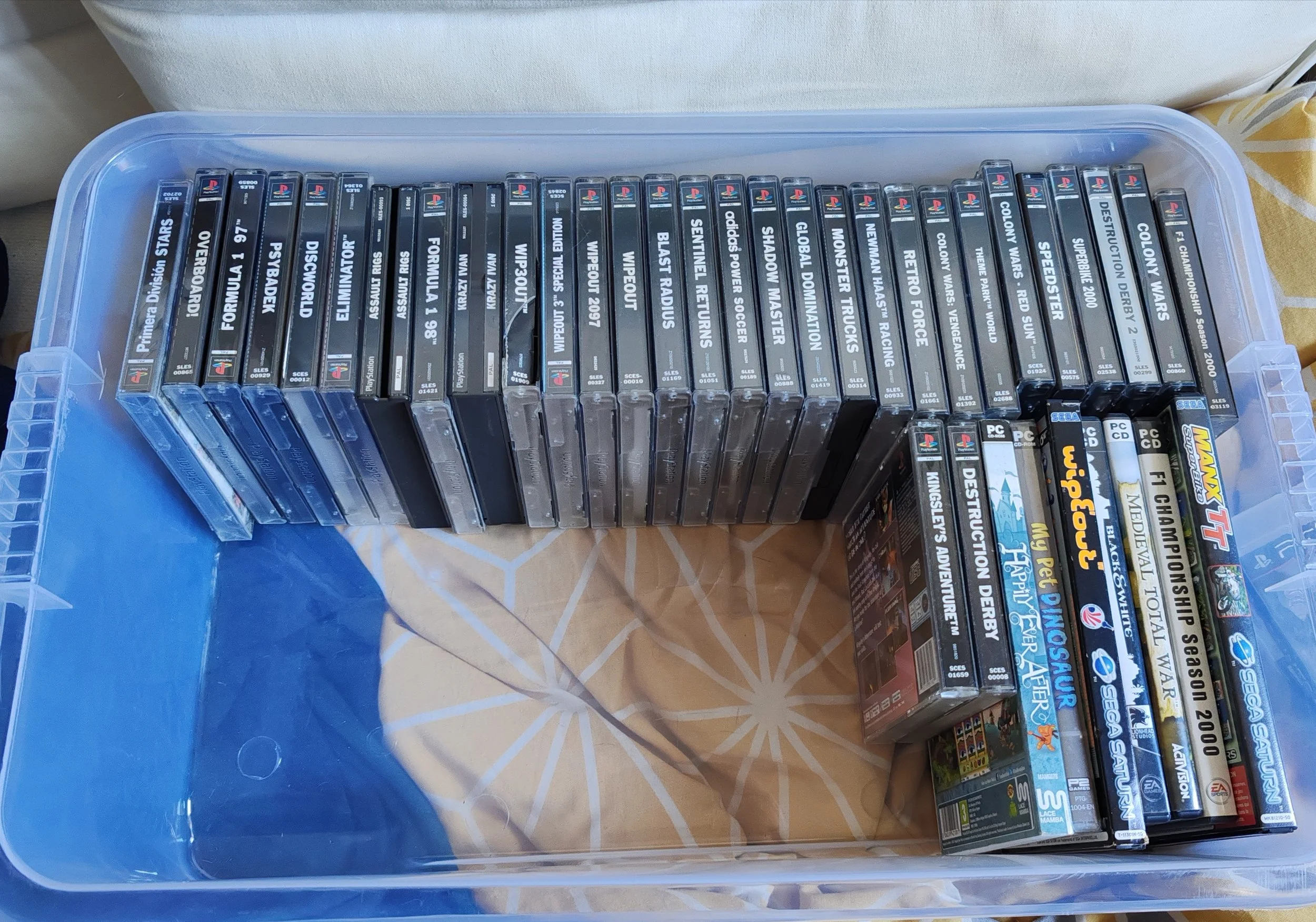A snapshot of 30 years of video games development (with Mark Inman)
/The last thirty years of video games have seen monumental shifts. That initial wave of 90s games with 3D graphics gave us a novel feeling that we were beholding the best games would ever look. Thirty years on, we’ve seen the rise of industry giants like Sony, Microsoft, and Nintendo, where games are free from the shackles of their disks and cartridges and are available anywhere and anytime (providing your internet’s fast enough). Not only that, sprawling, cinematic games with lifelike graphics rival Hollywood blockbusters, while mobile handsets offer premium gaming experiences in the palms of your hands.
Why are we reminiscing about the last thirty years? Well, this month, Auroch Digital’s very own Lead Producer, Mark Inman, marks (see what we did there) his [over] 30th anniversary in video games, and we thought we’d take this opportunity to see what he can share about this special tricennium.
Over to you, Mark!
Hi everyone,
I’m Mark, Lead Producer at Auroch Digital, and I’ve been working in games since I turned 21, first starting out in QA. As I clatter into year 33, I’ve decided to share some insights on what I’ve seen and learned – and while some of this might not be a departure from what’s already known, I hope it will be of interest!
Mixing the big hitters and the risky
As mentioned before, my first role was a QA Tester in the Liverpool-based studio, Psygnosis. As Sony had recently acquired the studio, there was buzz about joining a team that had a track record of creating experimental and artistically arresting games, such as Shadow of the Beast, Agony, and Leander – and, of course, the title that sold like gangbusters: the Lemmings series.
We’re all used to high-end, cinematic cutscenes from AAA titles nowadays, but when I joined Psygnosis, they had just started to go big on FMV games, spearheading technical developments of Sony’s first-ever games console.
Psygnosis’s game catalogue was quite diverse in terms of quality, profile and success. Core titles like Lemmings, Discworld, Colony Wars, Wipeout and F1 would be in the mix, alongside more niche titles such as Global Domination, Sentinel Returns, and Sentient.
Fun fact: One of Psygnosis’s early titles that didn’t see the light of day (at least not using the Psygnosis brand) was a 2D fighting game based on the Frankenstein film from the 90s. Yes, really. At the time, this approach was about the publishing arm showcasing its attractiveness to developers. Psygnosis, at the time, was regarded as a prestigious label to have your game associated with. In addition, the Sony financial support and relatively hands-off approach of their new owners meant they had the financial flexibility and established publishing chops to balance both the sure-fire hit and the more left-field.
Nowadays, perennial titles as well as more experimental work are part of a wider domain than just AAA publishers; smaller-scope publishers, such as Devolver Digital, Focus, or Raw Fury, regularly release successful titles or series that perhaps don’t fit the profile of a AAA publisher but are still impactful across the industry. Similarly, self-publishing developers with a hotly anticipated new IP or sequel may just look for the support of for-hire marketing, legal and PR firms to support the rigours of a title’s success. So, while breakout hits were once few and far between and AAA dominated the charts, it’s become more common for critical and commercial hits and franchises to come from across the wider industry.
Middleware – Once an expensive curio, now an essential part of development
At the start of my career in QA, I spent many happy weeks burning hundreds of EPROMs for SNES, Megadrive and Gameboy, shadowing what is now the equivalent of a QA Build Manager – made possible with a platform-agnostic toolchain called PSY-Q.
PSY-Q was a development platform that was both cheaper and an easier solution to the official options at the time, and many of Psygnosis’s client companies used it. The tool’s real popularity took off with the arrival of PlayStation and its official integration with its own development tool chains.
However, it’s only really in the last decade that a build-to-purpose, one-size-fits-all solution has existed, dating back to the early days of PSY-Q. While there were other viable options, such as RenderWare, the uptake was slow, and the cost to developers was high.
After years of searching for a way to properly penetrate mainstream game development outside of AAA studios, Unity, UE, Gamemaker (and much more recently, GodotEngine) have found the way to make their platforms accessible to even small developers without scaring them off with a hefty up-front license fee.
We’re now at a point where these platforms offer the sort of rapid prototyping and iteration that we haven’t seen since the high points of Flash games. In the late 1990s and early 2000s, Flash’s flexible set of tools was leveraged by users to create games, leading to an explosion of Flash game websites.
Being able to emulate this workflow with purpose-built development tools has not only revolutionised game development but also democratised it, allowing people with no background in programming to bring their visions to life.
Just a few oF Mark’s GAME COLLECTION from the PSYGNOSIS DAYS.
QA – Hard-won respect after far too long
Returning to the realm of QA. Initially, this role was primarily focused on testing and reporting bugs, when needed, rather than the longer-term planning and database building we’re used to now.
Back then, bug reports were handwritten on duplicate paper so both the tester and producer could retain a copy. Unless the producer was away or busy, most bugs would be directly reported to them and demonstrated so they could understand the reproduction steps. This could sometimes result in being on a call with the developer for hours as you explain the issue.
...and let me tell you, tracking bugs on paper is as exactly challenging and disorganised as it sounds!
The perception of QA as a game industry entry point has held back its reputation for years; seen as a low-skill, low-paid job for people “just to play games all day and get paid for it”, but this description seriously undermines the role. It requires a significant amount of concentration, attention to detail, clear communication, and the ability to solve problems.
Where QA used to be limited to code complete and beyond, QA need a deeper understanding of how the game or project is made, and a large proportion of QA are skilled technical workers, integrated into development teams from the very start. QA are a big part of the conversation, and their insight is essential – and listened to at the highest levels when it comes to the release of a game.
By today’s standards, the QA of 1993 is unrecognisable from 2025’s.
Size matters - build delivery, planning and releasing
Speaking of unrecognisable, it’s time to recall the building builds!
My first experience with build delivery was with a dedicated build repository PC (known at the time as the Bulletin Board System) in the producer’s room. This machine had its own 33.3 baud dial-up modem, allowing us to download builds from developers based in exotic locations, such as… Southport and Nottingham.
A dedicated machine was one thing, but in 1993, a dedicated phone line was prohibitively expensive. This meant that if any Producer missed the memo and used their desk phone, the downloading build would be cut off and end early. Our workaround to avoid late builds would be to wait until Friday lunchtime – as “most of the Producers would be at the pub!”
Seems archaic, doesn’t it? But it’s not as bad as the alternatives:
Corral a developer to bring their machine to the office to get the build and do any fixes directly (not frequent, but not unusual!)
Get the producer to drive to the developer’s house or office and pick up the discs or machines to bring them back to the studio for testing or manufacture.
The developer puts discs in post (or, if they were lucky, sends a courier).
All I can say is, thank goodness for developments in the world of digital delivery and internet security!
Release platforms – don't get physical with me
When physical media was dominant, there were huge strains and considerations on the release of a game. Every department ran like a military operation, as logistics and timing were critical to avoid ending up with a warehouse of unsold stock or marketing plans that missed their mark because a launch date slipped.
Launching a game in 2025 has its own challenges, and while physical editions exist, the advent of the digital medium allows more dynamic approaches. Concerns around manufacturing resources or hitting key holidays are less significant due to the plethora of analytics and data, contingencies for release dates and product visibility opportunities (such as online Showcase Events and savvy uses of Steam wishlists).
Whereas in the past we delighted gamers with an almost shock-and-awe marketing and PR approach, there’s now a greater emphasis on building your audience from the moment the game is announced.
I might have hailed the abandonment of reporting bugs on a piece of paper as the most revolutionary, but it’s the digital delivery of games that wins out, impacting almost every part of game development, and has even allowed small publishers and independent developers to thrive and find success.
Production – Your soft-skilled, multiple hat-wearing excel chameleons
Talk to anyone about what the role of producer entails, and you will get a million different answers, all of which are neither completely accurate nor wrong. Production is a shapeshifting role which encompasses far more than tracking budgets and resources on spreadsheets.
When I started working in video games, Production was focused on two distinct areas: internal and external Production.
Internal Producers handled first-party titles (i.e, those of PlayStation, Microsoft and Nintendo), working within the development team to deliver the game on time.
External production was focused on being a conduit between studio management, development teams, ops and QA, but also took on business relationship responsibilities: milestone approvals, coordinating build delivers (to QA, for example) and beyond.
Thirty years ago, the role of a producer was starting to split into distinct functions. What was once a single, project-wide role has, like QA, grown more complex with producers now often responsible for just one (or more) specific area(s), such as:
Development Director
Development Manager
Executive Producer
Lead Producer
Technical Producer
Localisation Producer
Associate Producer
Project Closer
This list isn’t by any means exhaustive, but covers many different aspects of the role, touching on discipline-specific or high-level, overview roles.
Production, as a soft skill discipline, is difficult to define. Aside from core skills of time and budget tracking, it also includes communication, a technical understanding and an analytical mind and all of this is often defined on an ad-hoc basis depending on the needs of the Publisher or Developer.
Production supporting development has always been part of the discipline’s identity, but has shifted from the blame-driven approach (when I first joined the industry) to a much more collaborative and solutions-oriented approach. Auroch Digital is a fantastic studio that has a “no blame culture”, and its actions back up those words. It’s very refreshing.
So, thirty years on...
I’ll close out by saying that my production career has not followed a well-trodden path. From managing (at the start of my production journey) very modest budget mobile games for monochrome Nokia handsets to wearing many hats (on top of being a studio admin) in a micro studio. I've worked on a porting project where the primary platform was still in active development by the original developers.
Every project, studio or process presents unique challenges as a producer – it’s what makes the role so enjoyable; it’s never the same experience twice!
Regardless of the style or scope of work, production is never boring, and after thirty years in the industry, that’s something I’m grateful for.





